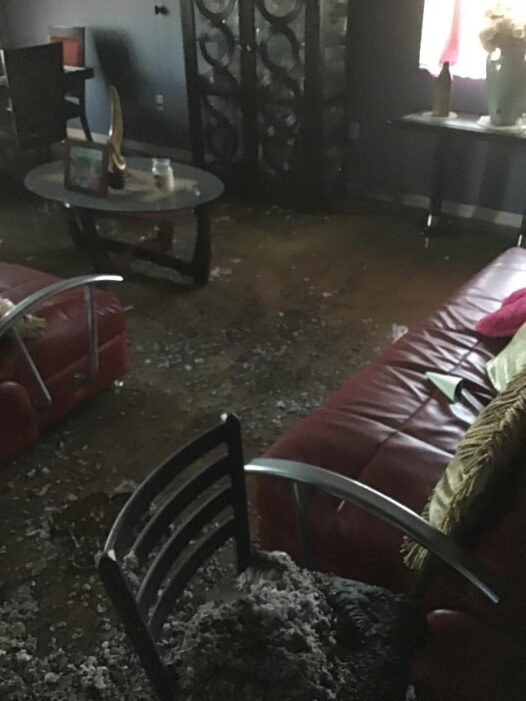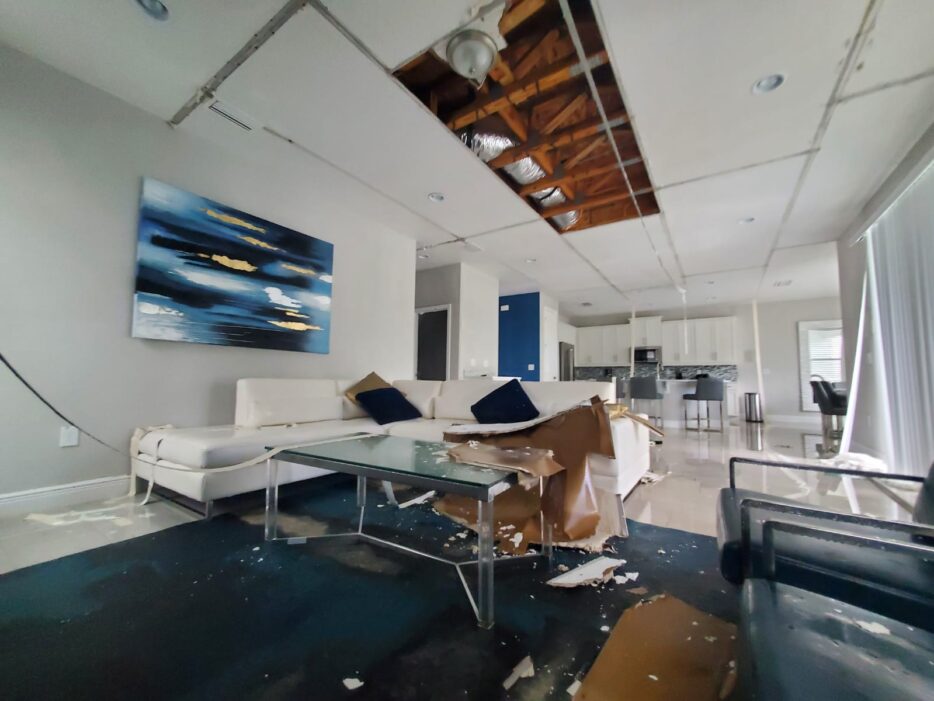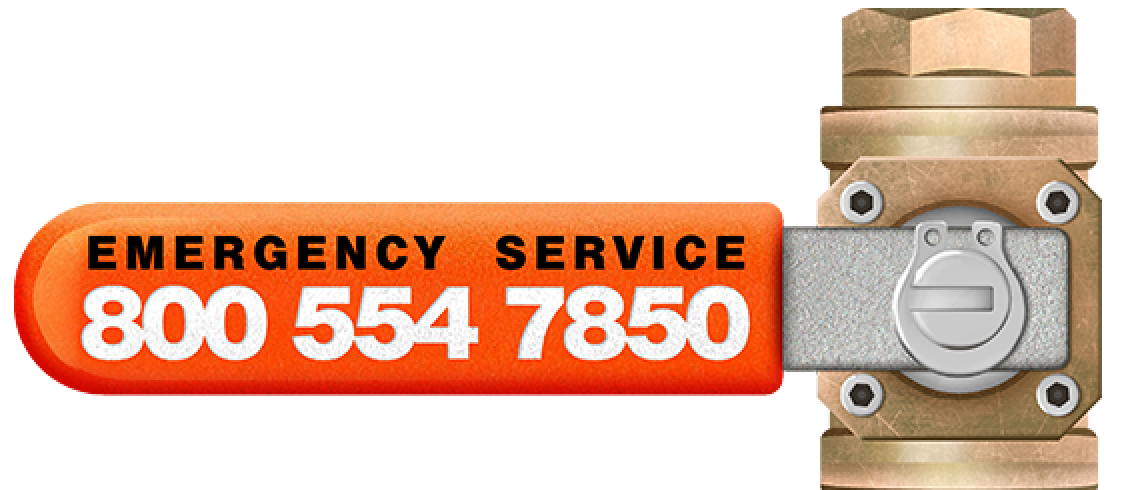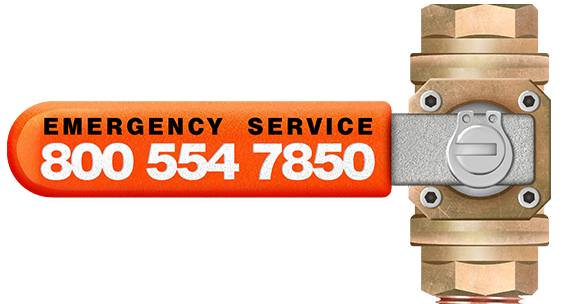Water Damage Series – Part 9: What To Do
What If?
Water disasters usually sneak up on you, and you will need to know what to do after it happens.
Imagine you have an appointment scheduled with your significant other to enjoy a mid-week couple’s massage. Why wait for the weekend to destress, do it when you’re in the middle of it all? You’re driving home, all relaxed, and talking about plans for the coming days. All is right in the world.
You get home and open the front door and you hear water dripping, lots of it, coming from the bathroom. When you get there, you see water everywhere. It’s on the counters, on the floor, dripping down the walls and dripping from the ceiling.
After that nice relaxing evening out, the upstairs neighbor’s water heater has just damaged your calm – and also your bathroom.
Every Situation Is Different

As you slosh through the hallway carpet you get a feel for how extensive the damage is. In this situation, which is a true story that happened to your author, one of us was on the phone calling the emergency maintenance number of the apartment complex and the other was trying to use towels to soak up the water and prevent it from spreading.
At that moment, nobody knew more about what was going on than my wife and I and we didn’t even know what the source of the water was. We just knew it was coming from the apartment above us. In retrospect, it could have been worse than a water heater bursting, which is a category 1 water source. It was above our bathroom and could have been a category 3. That would not have been a sanitary mess for me to clean up.
And there it is, a very isolated situation could have been much worse than it was. We were lucky. The drying equipment did it’s job in only a day.
What to Do After a Water Disaster
If you call your insurance company about the burst pipe, the leaking roof, or whatever the source of your water intrusion, they might gather your information and send it to a company like Construemax. We would then call you as soon as possible to get more information and arrange to get a technician out to inspect.
You could also call the mitigation company directly and just get the cleanup started immediately. When it comes to water damage, time is of the essence. Your insurance policy requires you to take reasonable measures to prevent further damage. As such, you can contact the restoration team first, and then the insurance company second.
It’s likely that the mitigation team only has part of the story. Before sending the technician out the Mitigation Coordinator is going to gather all the right information so that the technician is fully prepared upon arrival.
There may be a lot of questions, and some answers may result in additional questions. Understand that all of this is for your good, to have the best possible outcome. It isn’t an interrogation, it’s the start of the mitigation process.
What Do They Need to Know?
Beyond the normal information like name and address, insurance information, gate code, and so forth, the mitigation team is going to try to determine what category of water loss you’ve experienced. Most people won’t have any idea what this means or how to tell. So, they won’t ask you “what category loss is it?”

Having read this series on water damage, you would have an idea, but you may not have even found this series until after the loss has happened.
To get a sense of what category you have the coordinator on the phone will want to ask questions like:
- What is the source of the water?
- Is it clean water?
- When did this water intrusion happen?
- Where is the water (kitchen, bathroom, attic, dripping from the ceiling, etc)
- How many rooms, and which rooms are affected?
Questions like these will help the coordinator get a feel for what category loss you’re experiencing, and an idea of the class of loss.
Beyond the Category and Class…
There is still much more the coordinator will need to know. Depending on what you’ve already told them by answering the first questions, they may ask other questions like:
- What has been done to stop the source of the water?
- How much furniture is affected that will need to be moved?
- Is there electricity at the property?
It may seem like a silly question if you’re dealing with a refrigerator water line bursting, but mitigation companies help in all sorts of situations. Sometimes after a storm, there is no power and the mitigation team will need to bring generators. Sometimes the property is vacant and there is no power to the house. Water damage happens to all sorts of properties and the technician needs to know what to bring.
Remember, Safety First
Sometimes, even when you don’t like being told what to do, you need to be. Water damage is one of those situations where even if you know what to do, it’s helpful to be reminded. It’s best to listen to whatever council the Mitigation Coordinator gives you, but here are some good tips that deserve attention:
- Unless you’re a qualified electrician, resist doing anything that puts you or anyone at the property at risk of shock.
- Avoid coming in contact with hazardous materials or toxins in the water.
- Be cautious of and stay away from physical risks.
As an example of physical dangers, a water leak in an upstairs bathroom can leak through the floor and cause water to pool in the ceiling below. Wet drywall tends to lose its strength and will sag. Water is heavy, and it could burst through and drop water and broken drywall all over everything beneath it.

The Do’s of a Water Loss Situation
One thing you should try doing, if you’re able, is to eliminate the source of the water. Whether it’s turning off the overflowing tub or shutting off the water to the house, more water means more damage. Sometimes there just isn’t much you can do, like when you have a significant leak in your roof. You might not be able to eliminate the source before someone comes to tarp it, but you might be able to catch the water in buckets to prevent its spread.
In the list below of things that you might be asked to do, it is ALWAYS with the caveat to do these things ONLY if it is safe to do. Things you might be asked to do include:
- Turn off the circuit breakers
- Remove personal belongings, small furniture, electronics, and breakable items
- Protect the carpet from things that might stain it
- Books, clothing, shoes, anything that uses dye to color it – When they get wet the dye could leach into the carpet
- Draperies and furniture skirts could be pinned up or tied back away from the floor
- Put a barrier between furniture legs and the carpet (like foil, plastic wrap, disposable plastic lids) …again, ONLY if it can be done safely,
Some Don’ts
The idea behind the “don’ts” is to prevent things from getting worse. We talked about safety, and putting yourself in physical danger, getting hurt would certainly make things worse.
Here we talk about limiting secondary damage from the water. Secondary damage would include things like staining the carpet from wet furniture or clothes and mold growth. We want to avoid those. In this list some items refer back to personal safety:
- Don’t use vacuum equipment to remove water
- Don’t use newspaper on wet surfaces
- Limit walking on wet carpet as much as possible
- Don’t turn on the HVAC system or adjust the temperature settings
- Don’t use your home fans to dry wet areas
- Stay out of any area with standing water
- Don’t eat any food or drink from any container in the affected area, especially if the water is from an unsanitary source
- Any toiletries or personal hygiene items in the affected area should not be used, especially if the water is from an unsanitary source.
This seems like a large list, and it is. The list could be summed up by saying ‘don’t try this at home’. The reason for many things on this list is that what you do might not help, but could hurt, either your health or the property.
But It’s Too Hot to Not Run the A/C
It may be too hot to NOT turn on the air conditioner, or too cold to not run the heater. If you have any questions about ANY of the items in this list, please ask the Mitigation Coordinator. One of the things they do is help you, the property owner understand what to do after a water disaster.
What is important to do or not do in one situation may be of no concern in another situation. So, while common sense may tell you one thing, common sense is limited to common knowledge. When it comes to water disasters and water damage, there is a lot that is just not common knowledge. If in doubt, ask your mitigation coordinator, or the technician when they arrive.
Summary
Safety is the primary concern when it comes to water damage. The safety of the occupants of the property, the workers mitigating the damage, and the safety of the personal and real property that is affected by the water intrusion.
When you talk to the Mitigation Coordinator, they will have some questions for you. The purpose of these questions is to:
- Identify the risks and ensure the safety of people and property
- Inform the technician what equipment will be needed
- Provide the property owner with the guidance of what to do next
During this crisis, you will have many, many questions. Some of the questions will be for your insurance company, some will be for your mitigation team, and some for other third parties. One way or another, your mitigation coordinator will be able to help you know who to ask. If they don’t have the answer, they can usually point to the person that does.









